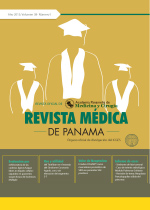Cuidados Paliativos en una paciente con Mesotelioma Peritoneal. Revisión de la literatura
Autores/as
DOI:
https://doi.org/10.37980/im.journal.rmdp.20221886Palabras clave:
mesotelioma, cuidados paliativosResumen
Introducción: Los mesoteliomas peritoneales se origina de las células que recubren la serosa de las cavidades del cuerpo, el 15% se originan del peritoneo. Su incidencia de es 0.2 a 3 casos por millones de personal al año. Son tumores raros y su supervivencia global se limita hasta 12 meses. El objetivo de esta presentación de caso es describir una presentación atípica de esta entidad y realizar una revisión de la literatura. Materiales y métodos: Se realizó una descripción de un caso en la consulta externa de oncología diagnosticada con Mesotelioma papilar bien diferenciado de primario de peritoneo diagnosticada en el 2012 quien en el 2022 mantiene 10 años de supervivencia global y se realizó una revisión de la literatura en base al caso clínico.
Resultados: Se define los tipos de mesotelioma peritoneal, sus características clínicas, el manejo del Mesotelioma Peritoneal según el Consenso de Chicago, los principios en cuidados de soporte como la ascitis peritoneal, el dolor, náuseas y vómitos, distrés psicosocial, así como la discusión del caso. Conclusión: El mesotelioma peritoneal es una enfermedad rara que puede ser rápidamente progresiva con una carga de enfermedad importante y pronóstico limitado. La instauración temprana de cuidados paliativos en pacientes con neoplasia incurable como el mesotelioma peritoneal permite el abordaje una mejor calidad de vida del paciente, así como de cumplir objetivos acordes a la situación clínica de cada paciente.
Archivos adicionales
Publicado
Número
Sección
Licencia
Derechos de autor 2022 Infomedic Intl.Derechos autoriales y de reproducibilidad. La Revista Médica de Panama es un ente académico, sin fines de lucro, que forma parte de la Academia Panameña de Medicina y Cirugía. Sus publicaciones son de tipo acceso gratuito de su contenido para uso individual y académico, sin restricción. Los derechos autoriales de cada artículo son retenidos por sus autores. Al Publicar en la Revista, el autor otorga Licencia permanente, exclusiva, e irrevocable a la Sociedad para la edición del manuscrito, y otorga a la empresa editorial, Infomedic International Licencia de uso de distribución, indexación y comercial exclusiva, permanente e irrevocable de su contenido y para la generación de productos y servicios derivados del mismo. En caso que el autor obtenga la licencia CC BY, el artículo y sus derivados son de libre acceso y distribución.







